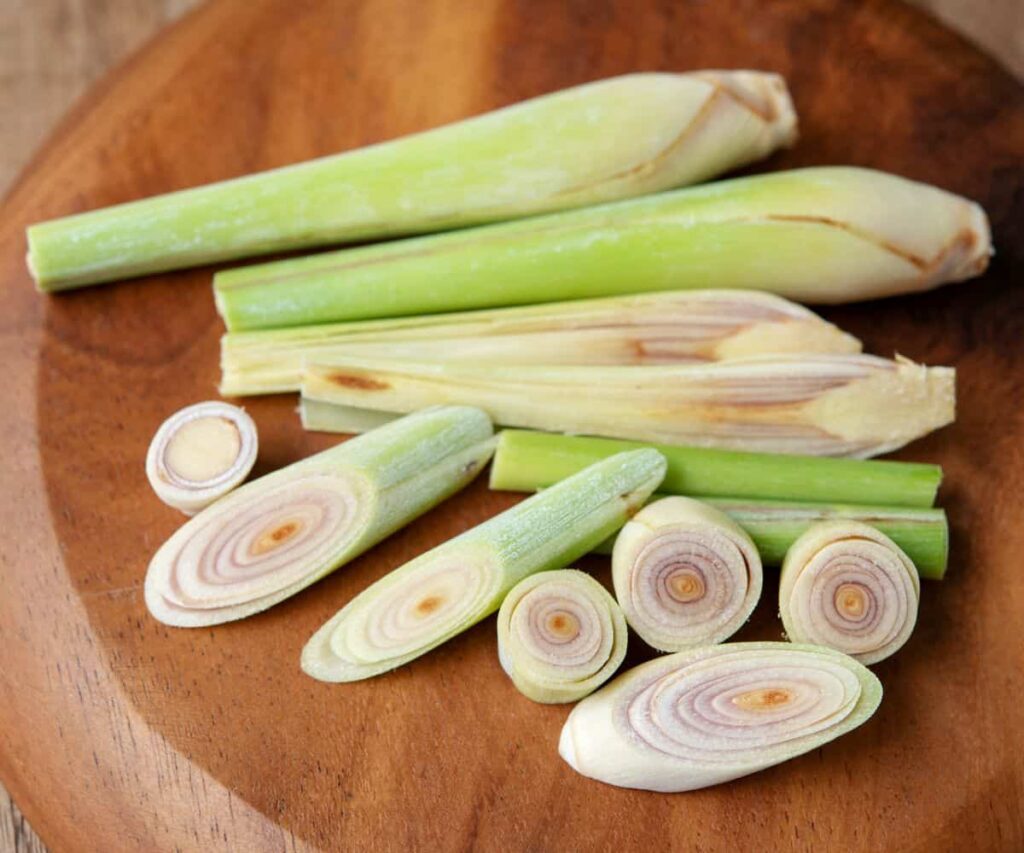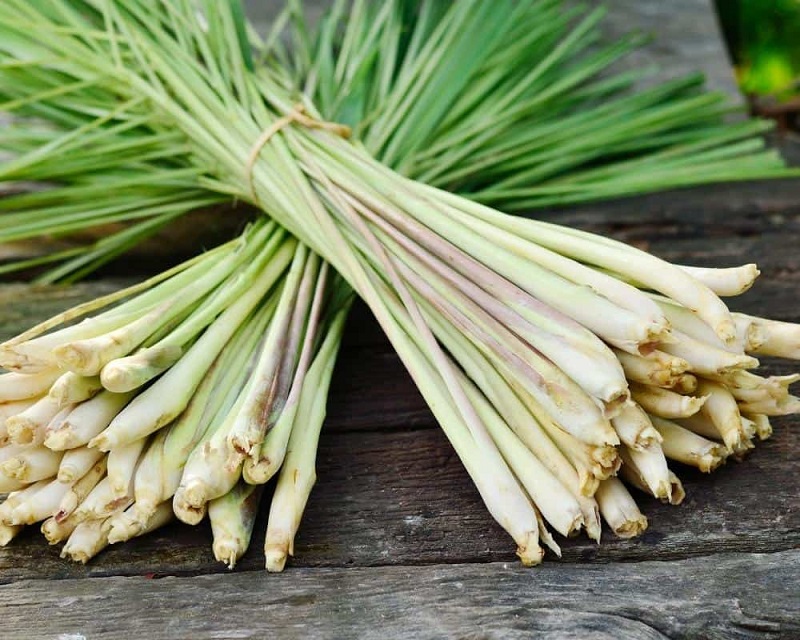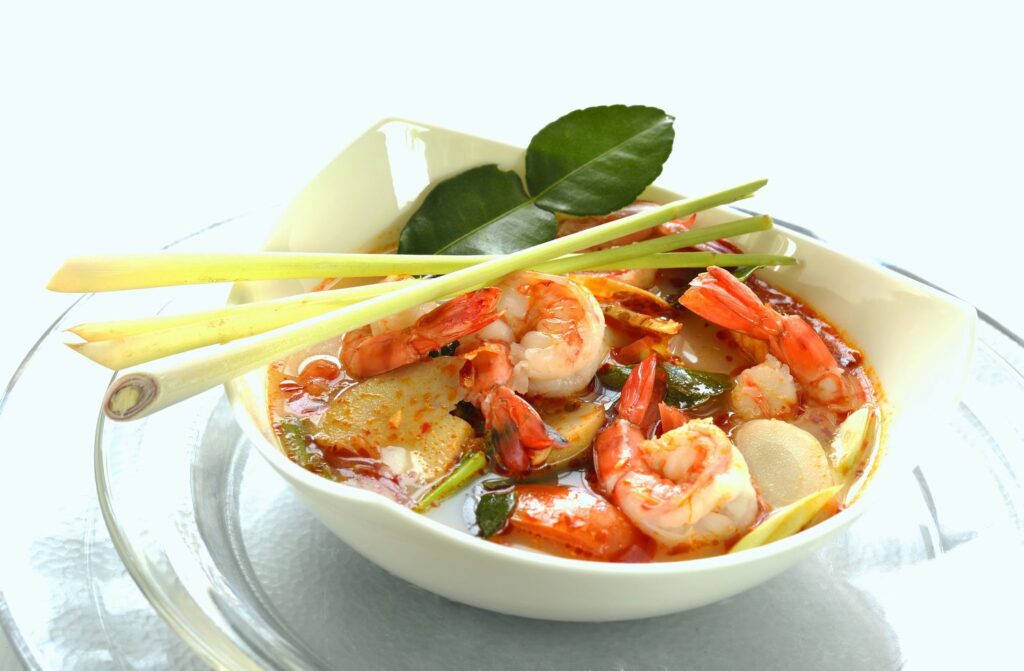No, they aren’t. Having more than 50 types of lemongrass throughout the world, only a few of these varieties are safe to eat.
As we all know, lemongrass is a lemon-flavored grass with exclusive medicinal properties. Besides, its distinct aroma is well-known throughout the world, especially among tea lovers.
Being a common cooking ingredient in Asian cuisine, it forces you to wonder which lemongrass species you should eat. And which parts of this fragrant long-living plant are safe for human consumption.
On that note, here we go with our findings on this versatile tropical herb.
What Is Lemongrass?

A woody, citrusy, blue-green grass-like herb known as lemongrass that has sharp-bladed leaves. These edible fragrant grasses grow 3-6 feet long. The lemongrass plants are generally known as Cymbopogon Citratus.
Usually, lemongrass tastes and smells like lemon. Despite being native to India, it grows well in other Asian countries too. They are available in Africa and Australia as well.
In fact, lemongrass grows pretty well in tropical and subtropical regions throughout the world.
Are All Types of Lemongrass Edible?
Reportedly, there are at least 55 varieties of lemongrass available worldwide. Of course, all of them aren’t the same and you cannot eat them all.
Although it’s a global plant, India is responsible for 80% of the world’s lemongrass production.
In most cases, only the East Indian and West Indian varieties of this plant are used in making tea and cooking dishes.
What Types of Lemongrass Are Edible?

Talking about the edible lemongrass types, the following four species are popularly used-
Cymbopogon citratus
This is the most common lemongrass species for culinary recipes.
Despite having a Malaysian origin, it’s known as West Indian lemongrass with aromatic flavor and herbal properties.
You can use this flavorful herb in cooking different recipes. Besides, it works great in bringing down fever and improving digestion.
And yes, it has antifungal properties as well.
Cymbopogon flexuosus
Moving on to the East Indian lemongrass variant, the Cymbopogon Flexuosus can be alternatively used as the West Indian species.
Whether you want to flavor up your fish or meat curries, adding some of its bulbs is enough.
You can also mix it with other spices to make a paste and try different cuisines with that paste.
Cymbopogon citriodora
We have another variant of West Indian lemongrass. This is called Cymbopogon Citriodora.
Similar to its other Citratus brothers, it serves pretty much the same purposes.
You can collect its leaves and let them dry. Then add them to your herbal tea to treat indigestion, fungal attacks, or high fever.
On the other hand, the bulbs of this West Indian species should be crushed before you add them to curries, soups, or salads.
Cymbopogon ambiguus
Unlike Asian lemongrass, this one grows in the hot regions of Australia. Thanks to its exclusive herbal values, you can prepare different teas and tonics with its leaves. Meanwhile, the bulbs are used for food preparation.
For your information, Cymbopogon Ambiguus is also known as scent grass.
Which Lemongrass Is Not Edible?
The inedible type of lemongrass is generally referred to as citronella grass. It’s also called Cymbopogon Nardus scientifically.
Nevertheless, it’s an instinctive Asian plant that is primarily used in insect repellants and perfumes.
Actually, the essential oil produced by Citronella is called citronella oil. And this oil makes citronella candles, insect-repelling products, etc.
This oil is forbidden for human consumption.
What Are the Benefits of Eating Lemongrass?
As you find edible types of lemongrass, you might question the benefits of consuming it in the form of herbal tea, tonic, or mixing it in your marinades. Here are the advantages of eating this tropical herb-
- Lemongrass boosts your immunity by enhancing your nervous system.
- Being a decent source of antioxidants, it removes toxins from the body.
- Lemongrass has potential anticancer abilities to lessen the risk of cancer.
- Lemongrass tea is supposed to treat your upset stomach by promoting healthy digestion.
- Two key components of this tropical herb, citral, and geranial have massive anti-inflammatory benefits
Which Variety of Lemongrass Is the Best?
Among all the variants, Cymbopogon Citratus is the most popular lemongrass type, mostly for its culinary values.
It’s a native plant of Southern India and Ceylon but is specified as West Indian lemongrass. The fast-growing grass is, however, used both fresh or powdered.
You can try preparing dishes, sauces, salads, or marinades using this fragrant plant.
Which Parts of Lemongrass Are Edible?
As we all know, almost all parts of lemongrass have cooking values. However, the bottom third part of the stem is edible whereas the upper stalks aren’t.
Being tougher, greener, and having a more papery appearance, they can only add flavor to your curries.
But you need to get rid of them before you serve the dish.
Can You Eat Lemongrass Raw?
Yes, you can. Raw lemongrass is usually used in making Thai salads.
However, they could be really tough. So, make sure you remove the outer stem properly and slice the inner part thinly.
Can You Eat Cooked Lemongrass?

Yes, you can eat cooked lemongrass.
You should use the tender tips of this herb for cooking. But you must mince and pure them beforehand.
If you want to add a bright, aromatic essence to your soup, stews, or Thai curry pastes, lemongrass is indeed a great choice.
Actually, dry lemongrass rehydrates when you cook it. So, you should boil or roast them for as long as possible.
And please remember to remove the lemongrass stalks from the dish before serving.
Final Words
That’s all about a detailed guide to lemongrass. Hopefully, it answers your question, is lemongrass edible or not? And as it’s edible, can you eat any variant?
Not really. You must be careful enough to pick the edible types only.
However, you can make use of this unique grass-like herb in different dishes. Rest assured that its light essence won’t overpower your food in any way.